Catocala hermia
kah-TOCK-uh-lahMHER-mee-uh
Henry Edwards, 1880

Catocala hermia from Alberta.

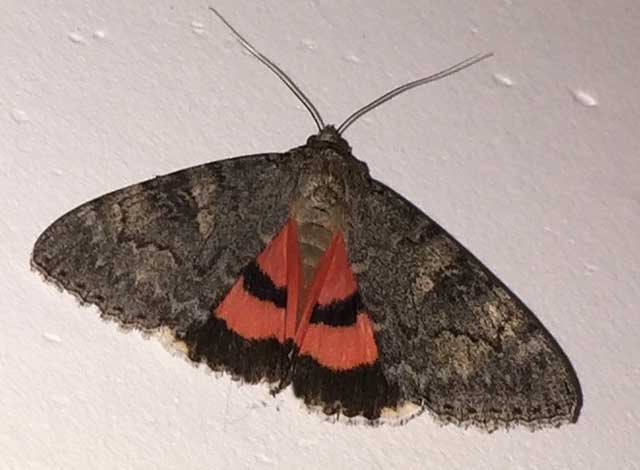
This site has been created by
Bill Oehlke at oehlkew@islandtelecom.com
Comments, suggestions and/or additional information are welcomed by Bill.
TAXONOMY:Superfamily: Noctuoidea |
There are also reports from Idaho, Nevada, New Mexico, North Dakota, Oklahoma, Utah and Wyoming.
The moth previous designated as Catocala sheba has been synonymized with Catocala hermia. Scott Shaw reports hermia is taken (not common) "on Pole Mountain, in the Medicine Bow Forest, Wyoming, about 10 miles east of Laramie near I-80 in the mountain willow bogs."
Form or subspecies C. hermia vericunda has been reported in western Oklahoma: Cimarron.
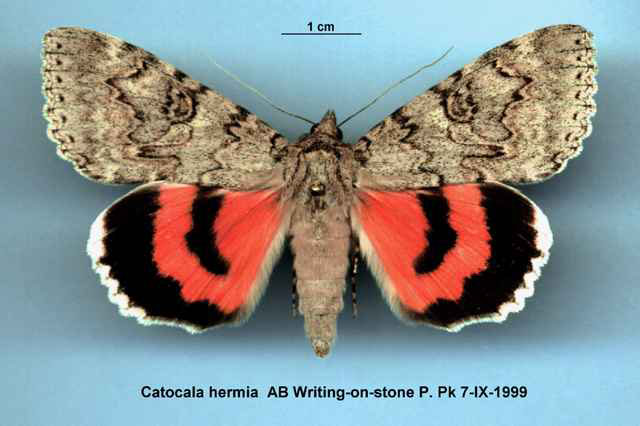
Catocala hermia Writing on Stone, Provincial Park, Alberta,
September 7, 1999, courtesy/copyright of Gary Anweiler.
The forewings are almost uniform/even, not powdery, grey-brown or clay coloured with thin, yet contrasting medial lines.The large double reniform spot is also distinct. The large concolourous subrenifrom spot is usually open. The hindwings are pinkish red with relatively even and narrow black bands. The inner black band terminates well before the inner margin. Fringe is white and checked with some pink/red "bleeding" along the outer black band, particularly near the apex. Image, Redcliff, Alberta, Canada, courtesy of John Acorn. | 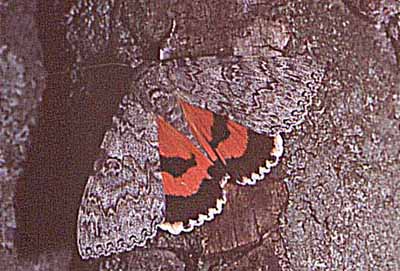 |
"Some specimens of C. hermia greatly resemble C. luciana, which has a browner, broader forewings and orange hindwings. It can also be difficult to separate C. hermia from smaller specimens of C. semirelicta, which usually have grey, powdery forewings and a slightly more orange shade of pink on the hindwings."
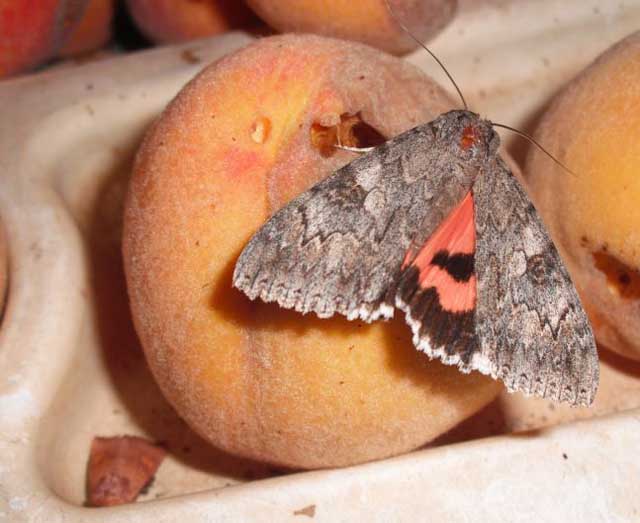
Catocala hermia, Wolf Creek, Josephine County, Oregon,
September 8, 2009, courtesy of Edna Bottorff,
tentative id by Bill Oehlke (could be pale semirelicta).
Catocala hermia larvae feed on poplars and willows. There is an almost uniform dark grey form known as vesta.
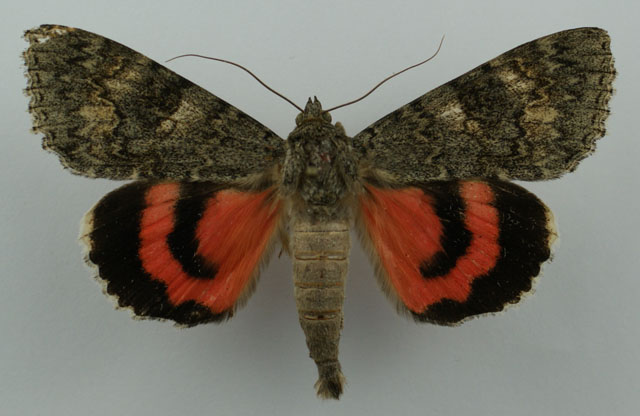
Catocala hermia male, Regina, Saskatchewan,
66mm, August 8, 2010, courtesy of Tim Taylor.
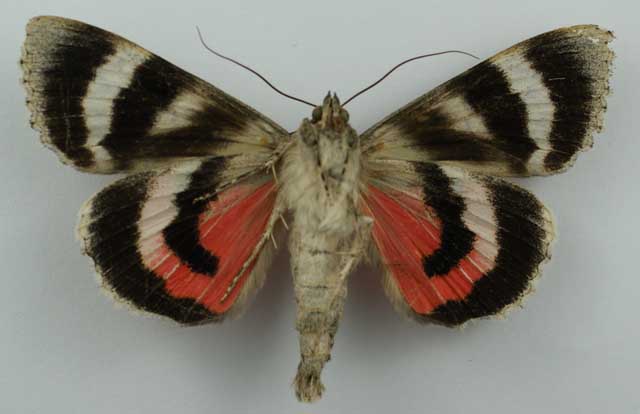
Catocala hermia male (verso), Regina, Saskatchewan,
66mm, August 8, 2010, courtesy of Tim Taylor.
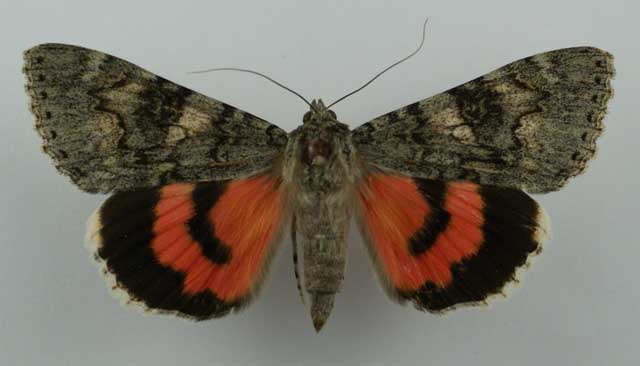
Catocala hermia female, Lumsden, Saskatchewan,
66mm, August 22, 2010, courtesy of Tim Taylor.
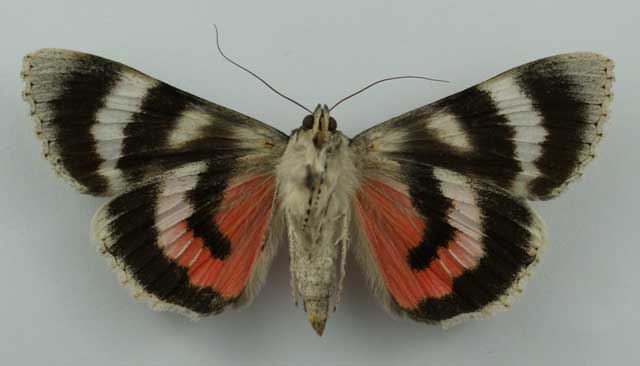
Catocala hermia female (verso), Lumsden, Saskatchewan,
66mm, August 22, 2010, courtesy of Tim Taylor.
This species comes to lights but is more common at sugar baits.
Populus...... |
Poplar |
Please send sightings/images to Bill. I will do my best to respond to requests for identification help.
Enjoy one of nature's wonderments: Live Saturniidae (Giant Silkmoth) cocoons.

|
butterfly to the left, a link to many worldwide insect sites. |
Return to Canadian Index
Return to Main Index